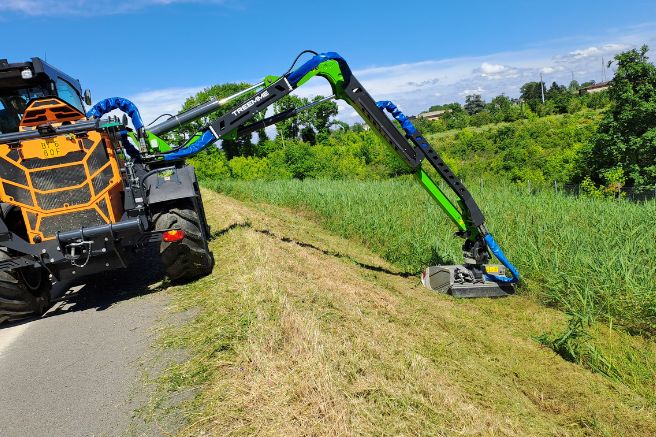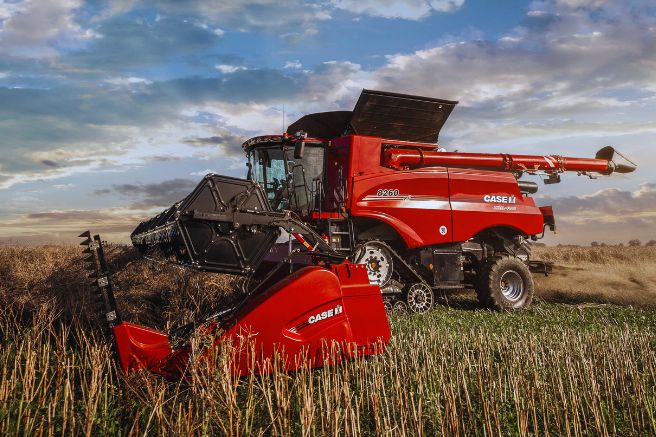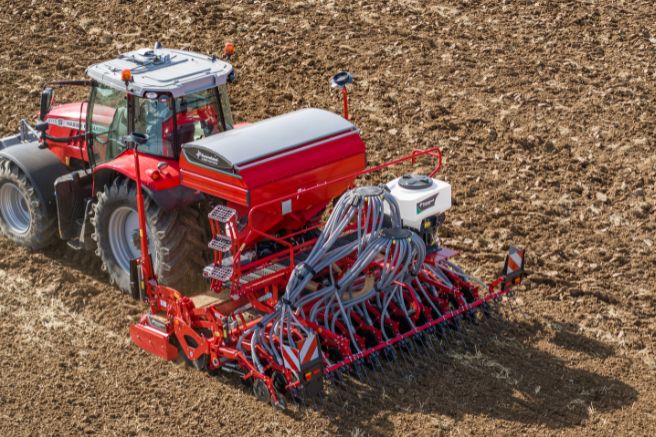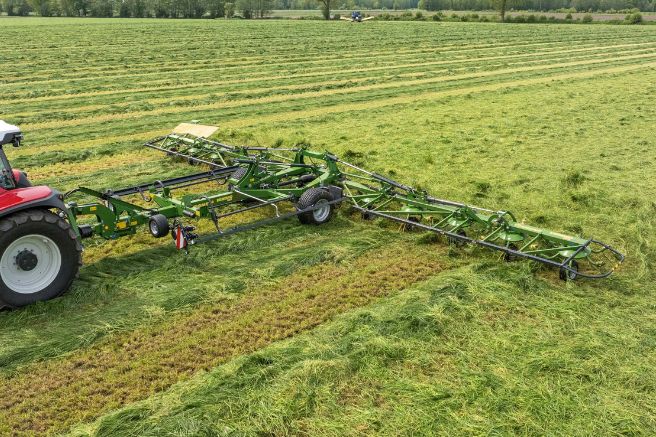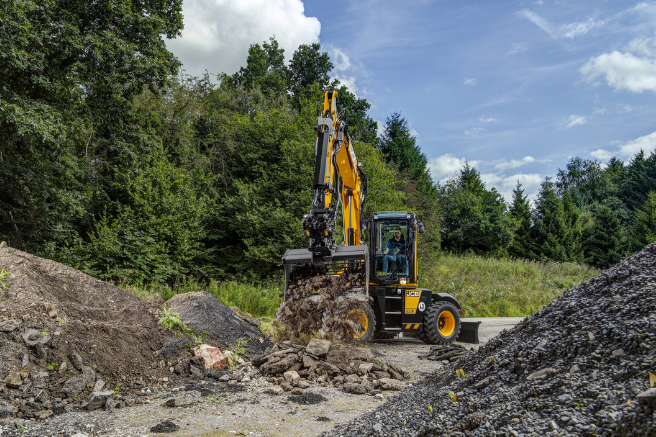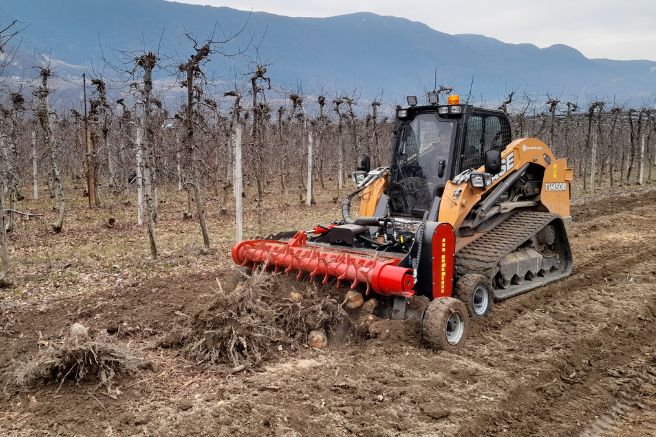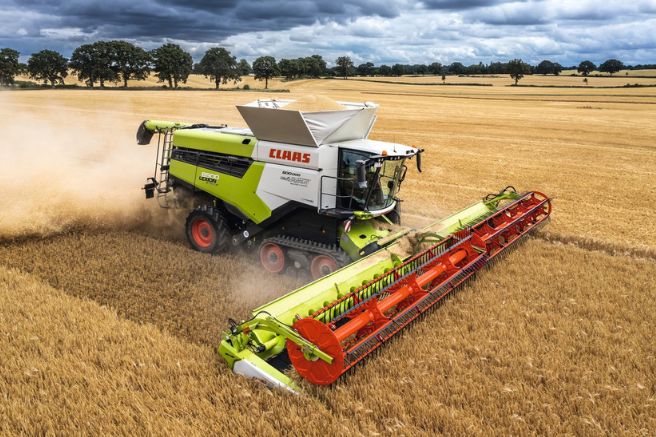Since its inception, the Merlo Group has based its production strategy on vertical integration, as an alternative to assembling components manufactured externally. In simple terms, this means that the company aims to produce most of the components needed to build its machines in-house, purchasing externally only the parts that would be too complex to produce internally. Examples of such parts are engines, tires, or, until recently, the trimming arms for the “Mm-Mc” series of municipal tractors branded Tre Emme. Extended reach up to eight and a half meters However, since…
Read MoreCategory: Home
Case Ih “Axial Flow 260” combine harvester, free automation
The preview last November, during Agritechnica 2023, the German agricultural mechanization exhibition. Since last July, the first models have been introduced to the market, along with the launch of an exclusive and highly advantageous commercial strategy for companies. The new Case Ih “Axial Flow 260” series combines harvesters with all the premium digital technologies in the industry, included as standard, and made available without any subscription fees. This allows operators to work with machines that fully express their functional potential without being burdened by additional production costs, aside from direct…
Read MoreKverneland “e-Drill Maxi Plus” seed drills: flexibility is the key
In view of the upcoming cereal sowing, scheduled between the end of October and late November, it is important to equip yourself with the best solutions to finalize the soil preparation, which is necessary to ensure the precise placement of the seeds. With this in mind, the Kverneland range of precision seed drills offers multiple solutions to meet various operational needs. Efficient Combined Solutions Among the different available options, the combined machines stand out. These machines are composed of seed drills working in combination with rotary harrows, allowing for seedbed…
Read MoreFendt combine harvester “Ideal” series, top harvesting
Combining hourly productivity, one of the main economic-management parameters of any agricultural machine, with the quality of the final product has now become the primary goal pursued by manufacturers in the harvesting machinery sector. The evolution of markets has increasingly linked the concept of “time” with that of “quality,” with the latter referring both to the harvested crop and its by-products, especially straw. This trend, which started with cereal and rice supply chains, has shifted the focus of farmers and contractors toward machines capable of balancing field performance with care…
Read MoreKuhn “Btfr” seed drills and “Hr” harrows: virtuous combinations
The combination of multiple implements to carry out different but sequential or related tasks in a single pass has become standard practice in the agromechanical field, as it allows for significant time and fuel savings. An example of this is the combination of seeding equipment with tools for soil refinement, a practice that has been common for years and has proven advantageous in terms of reducing both working time, which is halved, and fuel consumption, which significantly decreases, becoming lower than it would be if the two operations were performed…
Read MoreKrone “Vendro” and “Swadro” series, masters of rotation
Continuous improvement. In the Japanese tradition, it’s called by the exotic term “Kaizen,” or more prosaically, in the Italian way, it’s framed by the old but still valid adage “Never rest on your laurels.” Even when those laurels are abundant and might justify a moment of rest. In any case, it’s a business mindset that Krone has always embraced by continually launching new solutions in all its fields of activity. These innovations range from new technologies to product line expansions, the latter recently pursued in the segment of “Vendro” tedders…
Read MoreJcb “Hydradig Pro”: dig, carry and lift
On construction sites and in agricultural businesses, the routine activities to be carried out are always highly diverse, and often, unpredictable tasks are added, either due to accidental reasons or the opportunity to supplement income with extraordinary and contingent work. A good example of this is winter road maintenance, which is only needed in the event of heavy snowfall, making it unplannable but offering interesting income opportunities. Ideally, each job would be performed with dedicated equipment, but even in the most structured construction and agricultural companies, this clashes with the need to…
Read MoreSeppi “Miniforst pick-up cl” shredder, a question of finesse
Collecting and removing woody residues from cultivated fields is a problem that affects all those working in specialized agriculture. Over time, this issue has increasingly driven agricultural entrepreneurs toward equipment that can best support them in maintenance activities, processing the collected material to make it easily assimilable into the soil. This also applies to olive groves and citrus orchards The latter objective is specifically addressed by the renewed “Miniforst pick-up cl” mulcher from Seppi, a hydraulically operated forestry machine aimed at the mechanical processing of pruning residues in specialized environments.…
Read MoreClaas combines, designed in Europe for Europe
In 1936, numerous and epoch-making changes began in the Old Continent. British economist John Maynard Keynes laid the groundwork for transforming Western socio-economic paradigms with the publication of the “General Theory of Employment, Interest, and Money,” initiating the so-called “Keynesian revolution” that gave rise to the first form of macroeconomics. This work led to a profound renewal of the society and economic structures of the time, effectively opening the door to development policies still pursued in the West today. An almost comparable milestone in agricultural mechanization was the birth, also…
Read MoreJcb “DualTech”, dual in name and in fact
One of the key questions that an agricultural organization must address when purchasing a new self-propelled machine concerns the type of transmission. Currently, there are three basic technologies available: mechanical transmission, which serves as the entry-level option; continuous transmission, which is at the top; and hydraulic transmission, which serves as a bridge between the two. Since each type of transmission has its own pros and cons, the choice should be made based on rational considerations and the specific mission profiles that each machine must fulfill. Mechanical transmissions are robust and…
Read More
